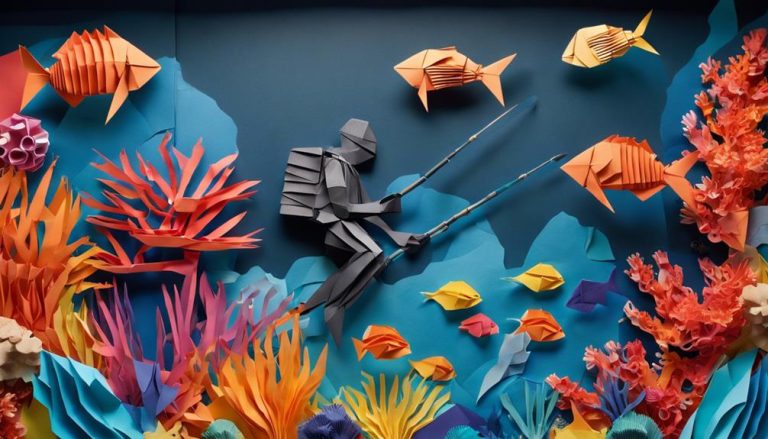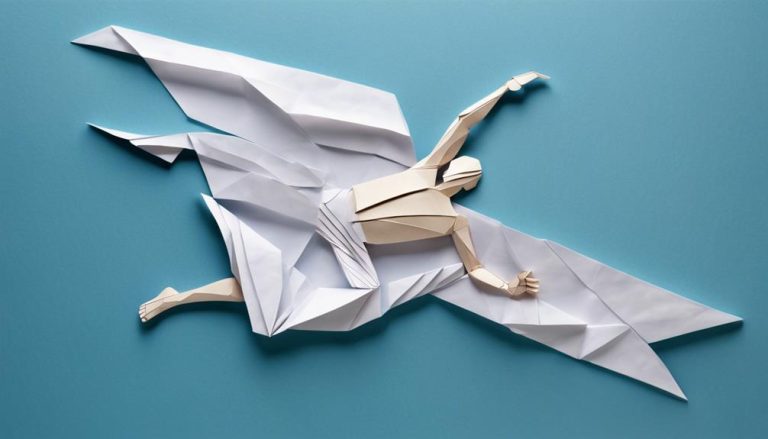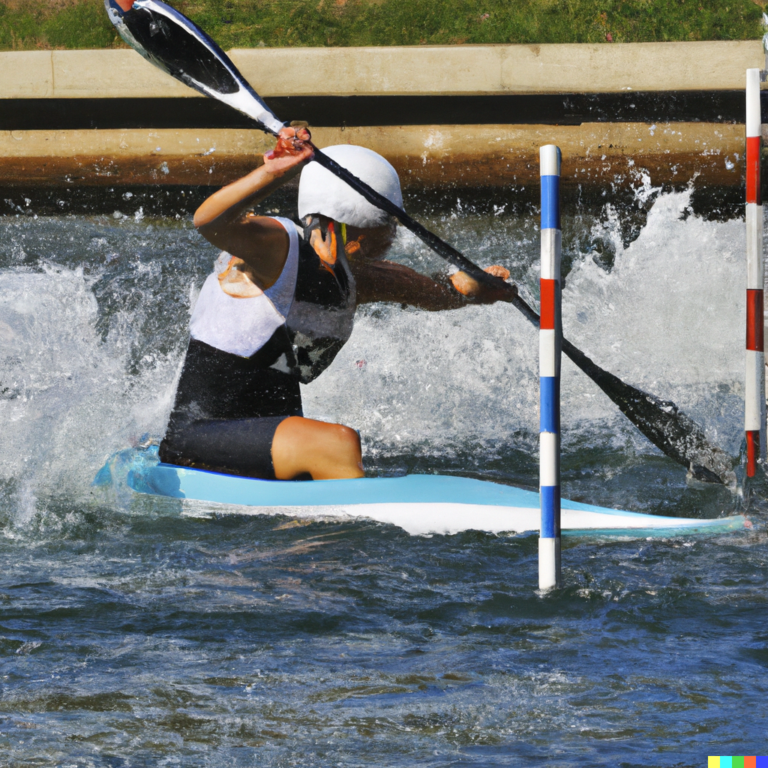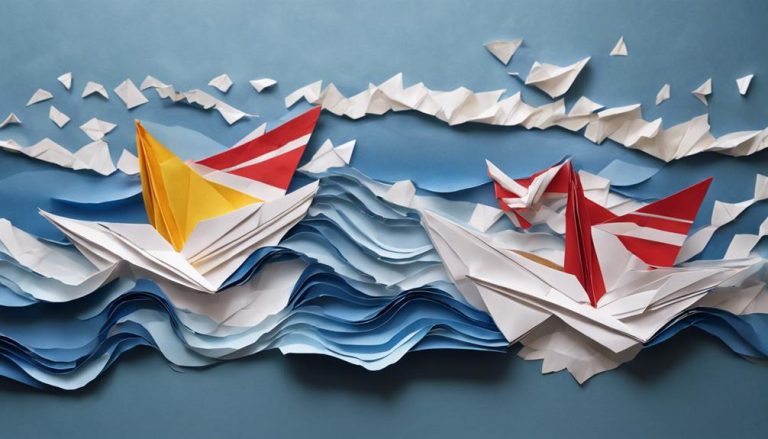General Rules of Paddleboarding
When paddling out on the peaceful waters, there are paramount principles to keep in mind for safe and enjoyable paddleboarding. From selecting the suitable gear to mastering the paddleboard strokes, adhering to these guidelines guarantees a gratifying experience on the water. But what about the unspoken rules that govern the interactions between paddleboarders? Understanding these nuances can make all the difference in your aquatic excursions.
Essential Equipment for Paddleboarding
When heading out for a paddleboarding adventure, make sure you have the essential equipment to make your experience safe and enjoyable. Board selection is important – consider the type of water you'll be on and your skill level. For calm waters, a wider board offers more stability, while narrower boards are better for rougher conditions. Confirm your gear essentials are in check: a leash to keep you connected to your board, a personal flotation device for safety, and appropriate clothing for the conditions.
Paddle size matters more than you might think. Stand with the paddle vertically beside you; the handle should reach your wrist. This ensures you have the right length for efficient strokes. Proper foot placement on the board is key. Stand in the center, parallel to the board's edges, with feet hip-width apart. Keep your knees slightly bent to maintain balance and be ready to shift your weight as needed.
Having the correct equipment and knowing how to use it will enhance your paddleboarding experience. Take the time to select the right board, confirm you have all the necessary gear, and pay attention to details like paddle size and foot placement. By being prepared and informed, you set yourself up for a safe and enjoyable time on the water.
Proper Paddleboarding Technique
Get ready to elevate your paddleboarding game by mastering the art of proper technique. When it comes to dominating the waters, your grip and stance, paddle stroke, and body position are essential components to focus on. By honing these key points, you'll navigate the waters with confidence and finesse, making every paddleboarding session an exhilarating experience.
Grip and Stance
Mastering the correct grip and stance is essential for achieving balance and control while paddleboarding. Proper foot placement is key to maintaining balance on the board. Your feet should be shoulder-width apart, parallel to the stringer for stability. Engage your core muscles and find your center of gravity to stay upright. Hip rotation plays an important role in steering the board; use it to guide your paddle stroke and maintain directional control. The angle of your paddle is important for efficiency; make sure it enters the water perpendicularly to maximize propulsion. Embrace the freedom of movement that comes with mastering your grip and stance. Let the gentle push of the water liberate you as you glide across the surface with confidence.
| Key Points | |
|---|---|
| Proper Foot Placement | �♂️ |
| Engage Core Muscles | � |
| Utilize Hip Rotation | � |
Paddle Stroke
To achieve top performance and efficiency in paddleboarding, perfecting your paddle stroke technique is paramount. Mastering paddle stroke techniques will not only enhance your speed and agility but also prevent fatigue and strain on your muscles. Efficient paddle strokes involve engaging your core, utilizing proper hand positioning, and maintaining a smooth rhythm throughout your strokes. To further refine your skills, incorporate paddle stroke drills into your practice sessions. Focus on your posture, the angle of entry and exit of the paddle, and the power generated with each stroke. Continuous improvement in your paddle stroke will not only elevate your paddleboarding experience but also discover new levels of control and mastery over the water.
Body Position
Achieving proper body position is essential for mastering the art of paddleboarding and maximizing your performance on the water. To excel in paddleboarding, you must find a balance between stability and agility, which presents a balancing challenge that enhances your experience. Your body's alignment and core strength play a crucial role in maintaining control and efficiency while paddling. Let's delve into the key components of body position that will elevate your paddleboarding skills:
| Body Position | Tips |
|---|---|
| Feet Placement | * Keep them parallel to each other, shoulder-width apart. |
| Posture | * Stand tall with a slight bend in your knees and hinge at the hips. |
| Core Engagement | * Activate your core muscles to stabilize your body. |
| Arm Position | * Extend your arms and hold the paddle with a firm grip. |
Mastering these elements will not only improve your performance but also make paddleboarding a more fulfilling experience.
Safety Guidelines on the Water
Strap on your PFD for safety, especially when paddling in unfamiliar waters. Keep away from crowded areas to minimize risks of collisions and accidents. Always be vigilant of boats and other watercraft in your surroundings to guarantee a safe and enjoyable paddleboarding experience.
PFD Requirement for Safety
Ensuring you wear a properly fitted and Coast Guard-approved PFD is essential for your safety while paddleboarding. Your life jacket is not just a piece of gear; it's your lifeline on the water. Safety precautions should never be overlooked. In the event of an emergency, quick thinking and the right equipment can make all the difference. Understanding water rescue procedures is vital for your well-being. By having a reliable PFD, you are empowering yourself to explore the waters with confidence and freedom. Remember, safety first – it's not just a motto, it's a way of life. So, before you set out on your paddleboarding adventure, gear up with your PFD and embrace the liberation that comes with knowing you're prepared for anything.
Avoid Crowded Areas
Before venturing out on your paddleboarding excursion, prioritizing your safety by steering clear of crowded areas on the water is essential. Seek the tranquility of quiet waters and the serenity of solitary spots to truly immerse yourself in the beauty of paddleboarding. Here's why it's vital:
- Safety: Avoiding crowded areas reduces the risk of collisions and guarantees a more peaceful experience.
- Enhanced Enjoyment: Paddling in quiet waters allows you to connect with nature and experience a sense of freedom.
- Privacy: Opting for solitary spots gives you the space to paddle at your own pace without distractions, fostering a deeper connection with the water.
Watch for Boats
When paddleboarding, always stay vigilant and watch for boats to guarantee your safety on the water. Boat traffic can be unpredictable, so it's important to maintain awareness of your surroundings. Understanding marine etiquette and having paddleboarding awareness are essential for a safe and enjoyable experience. As you glide through the waters, keep a lookout for any signs of approaching boats. Make yourself visible by wearing bright colors and using a whistle to signal your presence if needed. Remember, you have every right to be out on the water, but sharing it responsibly is key. By respecting boat traffic and practicing water safety, you contribute to a harmonious environment for all water enthusiasts. Stay alert, stay safe, and enjoy the freedom of paddleboarding.
Understanding Right of Way
With paddleboarding being a sport that involves sharing the water with others, understanding right of way is important for a safe and enjoyable experience. As you glide across the water, remember that respecting the right of way guarantees harmony among fellow paddlers and water enthusiasts. Here are some key points to ponder:
- Awareness is Key: Always be mindful of your surroundings and the presence of other watercraft. Look out for kayaks, boats, and other paddleboarders. By staying vigilant, you can anticipate potential conflicts and navigate them smoothly.
- Follow the Rules: Each body of water may have specific rules regarding right of way. Familiarize yourself with these regulations to make sure you are paddling responsibly and in accordance with local guidelines. This knowledge not only keeps you safe but also contributes to a positive paddling community.
- Respect Others: Treat fellow paddlers with kindness and consideration. If you encounter a situation where right of way is in question, communicate clearly and calmly. By fostering a culture of respect and understanding on the water, you contribute to a more enjoyable experience for everyone involved.
Embracing the principles of right of way enhances your paddleboarding journey, allowing you to navigate intersections with confidence and grace. Remember, by valuing clear communication and mutual respect, you empower yourself and others to revel in the freedom and joy of paddleboarding.
Environmental Etiquette for Paddleboarders
To truly respect and preserve the beauty of the waters you paddle on, always prioritize environmental stewardship while paddleboarding. Embracing eco-friendly practices is not just a choice; it's a responsibility we owe to the marine habitats we explore. When you venture out on your paddleboard, remember that every action you take has an impact on the environment around you.
One of the most important aspects of environmental etiquette for paddleboarders is to minimize your carbon footprint. Opt for eco-friendly gear and products, such as biodegradable sunscreen to protect both your skin and the marine life beneath you. Additionally, always clean up after yourself and others, leaving no trace of your presence on the water.
When encountering marine wildlife during your paddleboarding adventures, maintain a respectful distance. Observing these creatures in their natural habitat is a privilege, and we must make sure that our presence does not disturb or harm them. Avoid feeding wildlife and never try to touch or chase them. By practicing responsible marine wildlife interaction, we can coexist harmoniously with the diverse species that call the waters home.
Tips for Paddleboard Maintenance
As you set out on your paddleboarding journey, ensuring proper maintenance of your equipment is key to prolonging its lifespan and maximizing your enjoyment on the water. Taking care of your paddleboard is not only about preserving its appearance but also about ensuring its performance and safety. Here are some essential tips for paddleboard maintenance:
- Cleaning Tips: After each use, rinse your paddleboard with fresh water to remove any salt, sand, or debris that could cause damage over time. Use a mild soap and a soft sponge to clean the board gently. Avoid harsh chemicals that could degrade the materials.
- Storage Solutions: When not in use, store your paddleboard in a cool, dry place away from direct sunlight. Prolonged exposure to UV rays can cause the board to fade and weaken. If possible, store the board indoors or use a board bag to protect it from the elements.
- Regular Inspections: Periodically inspect your paddleboard for any signs of wear and tear, such as cracks, dents, or loose fins. Addressing small issues promptly can prevent them from escalating into more significant problems that may affect your paddling experience.
Frequently Asked Questions
Can I Paddleboard in Any Type of Weather Conditions?
You shouldn't paddleboard in extreme weather conditions like storms or strong winds. Make safety precautions are in place before heading out. Proper equipment maintenance and developing your skills will help you navigate challenging situations confidently.
Are There Any Specific Rules or Regulations for Paddleboarding in Different Bodies of Water?
When paddling in different bodies of water, always prioritize safety protocols and respect local restrictions. Make sure you have the right gear, knowledge of the area, and follow any specific guidelines to have a thrilling and safe experience.
How Do I Properly Transport My Paddleboard to and From the Water?
To transport your paddleboard like a pro, use securing straps to keep it snug on your roof racks. Secure it properly, ensuring a smooth ride to and from the water, setting you up for a stress-free adventure.
Is It Okay to Paddleboard Alone or Should I Always Go With a Partner?
Paddling solo can be freeing, but safety is key. Going with a partner adds joy and security. Whether alone or with a buddy, always prioritize safety and have a blast on the water!
What Should I Do if I Encounter Marine Wildlife While Paddleboarding?
If you spot marine wildlife while paddleboarding, take a moment to appreciate nature's beauty from a safe distance. Practice safety precautions like giving them space and staying calm. Remember, proper etiquette guarantees harmonious animal encounters.






